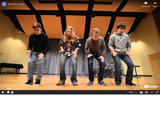
Video "Body Percussion"
- Subject:
- Arts and Humanities
- Performing Arts
- Material Type:
- Interactive
- Provider:
- Michigan Virtual
- Date Added:
- 12/13/2018

Video "Body Percussion"
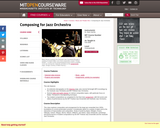
"This class explores composition and arrangement for the large jazz ensemble from 1920s foundations to current postmodern practice. Consideration given to a variety of styles and to the interaction of improvisation and composition. Study of works by Basie, Ellington, Evans, Gillespie, Golson, Mingus, Morris, Nelson, Williams, and others. Open rehearsals, workshops, and performances of student compositions by the MIT Festival Jazz Ensemble and the Aardvark Jazz Orchestra. ĺĘ"
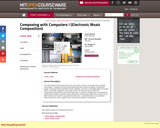
A series of progressive composition projects, culminating in a large final projecting, using various types of music hardware and software. Instruction in recording, editing, synthesis, sampling, digital sound processing, sequencing, and interactive systems. Close listening to computer and electronic music from various genres including Varese, Cage, Schaeffer, Xenakis, Lansky, Stockhausen, Tcherepnin, Barlow, Gunter, and Eno. Subject focuses on using the computer as a means of musical creativity and intuition.
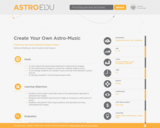
In this activity, students learn about astronomical phenomena we can see in the universe and create their own music inspired by astronomical images. By performing original musical improvisations, students enhance their knowledge of what astronomical phenomena are represented in images and experiment with creative ways of representing these using music. This activity engages students in first hand exploration of music and astronomy connections.

DescriptionOverview: This lesson allows students to work on their keyboarding skills while creating pieces of music. Students can choose classiccal music, current hits, or just play around with the keyboard. Students will then be able to create an app using Code.org's AppLab that uses a recording of the music they play.Subject:Computer Science, Business and Communication Level:Middle School, High School Grades:Grade 7, Grade 8, Grade 9, Grade 10, Grade 11, Grade 12 Material Type:Lesson Plan Author:Jennifer Clark Date Added:04/06/2019License: Creative Commons Attribution-NonCommercial 4.0 Language:English Media Format:Downloadable docs, Interactivehttps://www.oercommons.org/courseware/lesson/53119/overview
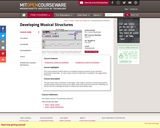
What are the roles of analysis, description and performance in developing musical perception and understanding? How are units of perception different from units of description? Bamberger's text "Developing Musical Intuitions" and the accompanying software "Impromptu" are used as environments for composing melodies and percussion pieces. These, in turn, serve as the basis for students to interrogate their musical intuitions so as to expand and develop them. Term projects involve learning to perform a new composition or an experiment in musical perception, or designing multiple representations for appropriate analysis of a significant work. The goal of this class is practical: to interrogate, make explicit, and thus to develop the powerful musical intuitions that are at work as you make sense of the music all around you. Reflecting, we will ask how this knowledge develops in ordinary and extraordinary ways.
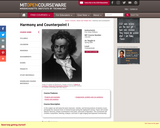
Basic writing skills in music of the common-practice period (Bach to Brahms). Work includes regular written assignments leading to the composition of short pieces, analyzing representative works from the literature, keyboard laboratory, and sight-singing choir. It is recommended that entering students have some concert music listening or playing background. Enrollment may be limited.
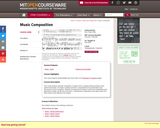
Directed composition of larger forms of original writing involving voices and/or instruments. Includes a weekly seminar in composition for the presentation and discussion of student work in progress. Students are expected to produce at least one substantive work, performed in public, by the end of the term. Contemporary compositions and major works from twentieth-century music literature are studied. Meets with graduate subject 21M.505, but assignments vary.
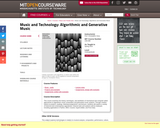
This course examines the history, techniques, and aesthetics of mechanical and computer-aided approaches to algorithmic music composition and generative music systems. Through creative hands-on projects, readings, listening assignments, and lectures, students will explore a variety of historical and contemporary approaches. Diverse tools and systems will be employed, including applications in Python, MIDI, Csound, SuperCollider, and Pure Data.

SPARK explores experimental music with Matt Davignon as he curates "Live Play" at Artist's Television Access, the first event in San Francisco's Soundwave Series. This Educator Guide is about the history of experimental music and sound art.